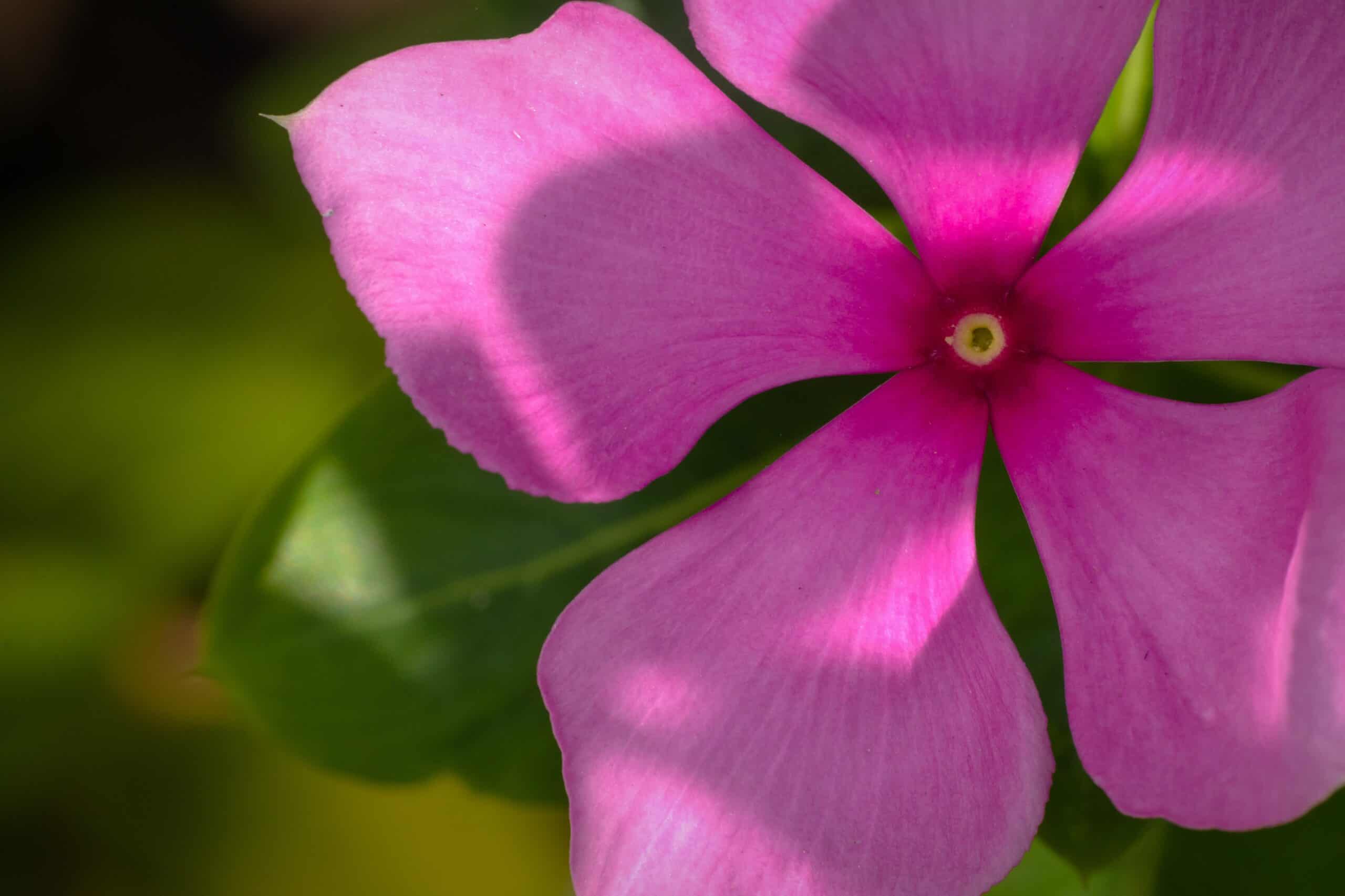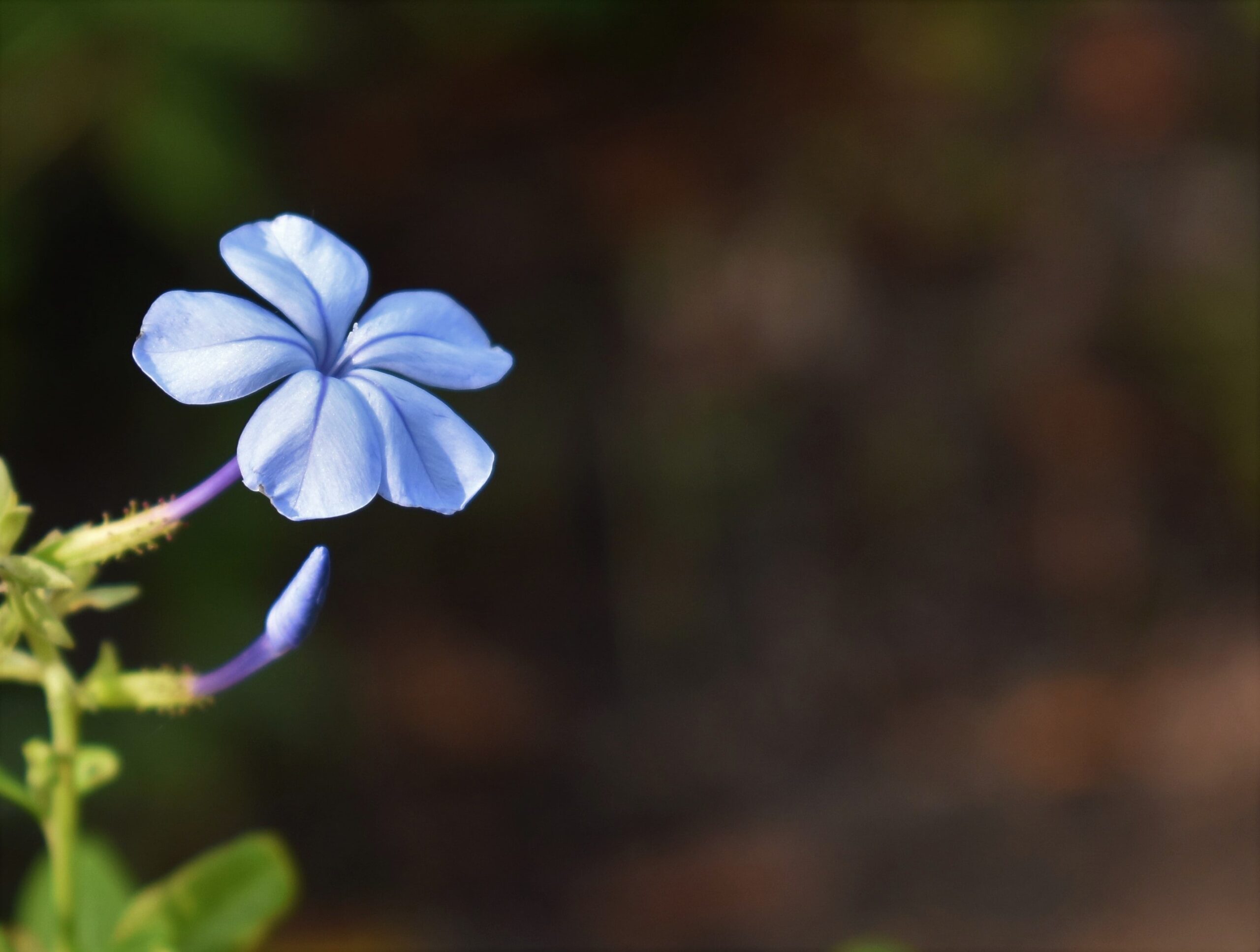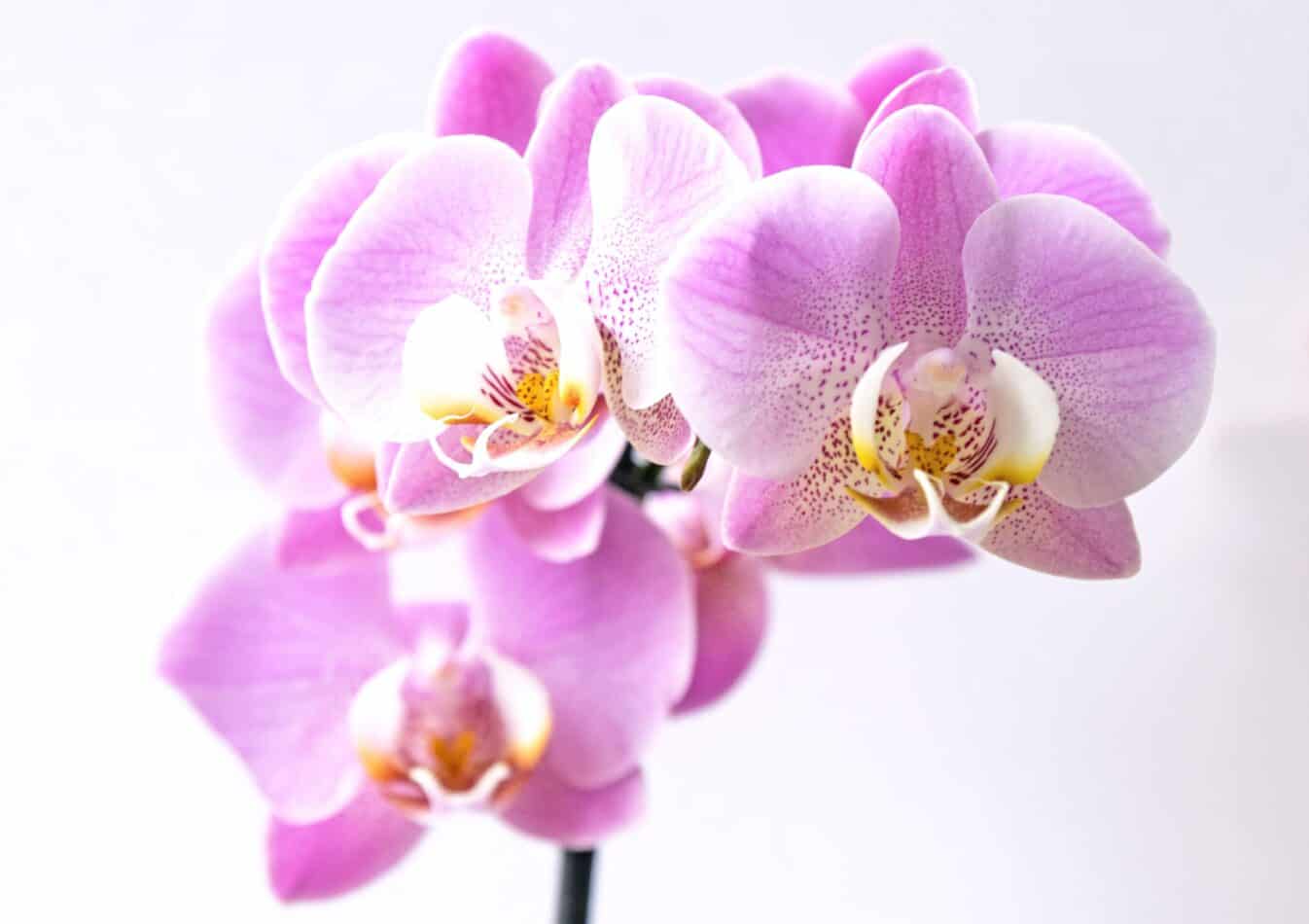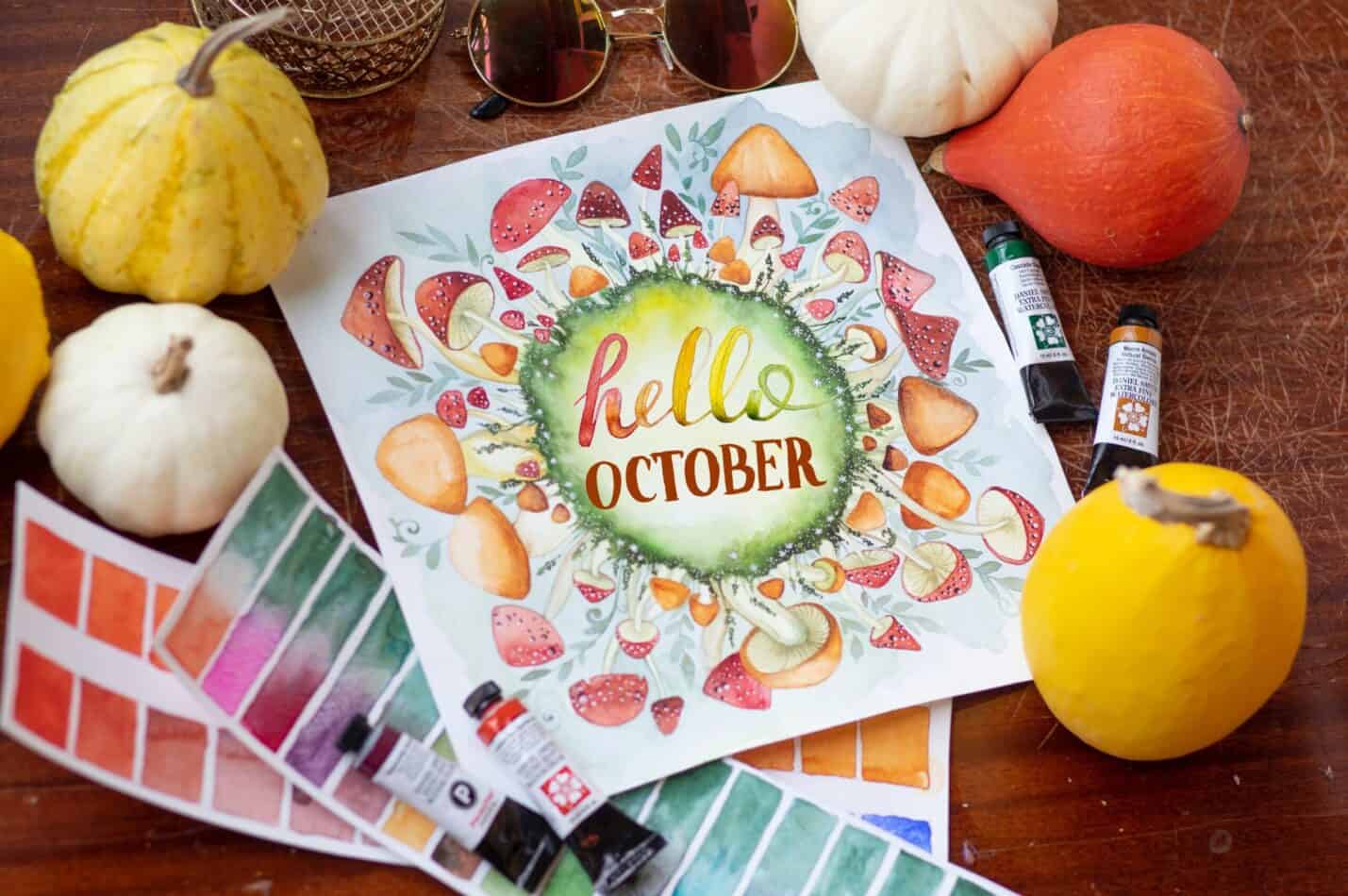Periwinkle, scientifically known as Vinca minor, is a delightful and charming perennial herbaceous plant that thrives in the temperate regions of Europe and Asia. This evergreen plant has a sprawling, low-lying growth habit, with glossy dark-green leaves and clusters of delicate, five-petaled flowers. The blossoms range in color from ethereal blues to pure whites and bloom from May to July, emitting a sweet fragrance that attracts bees and butterflies. There a few key points that you will need to know on How to Grow and Care for Periwinkles which we will cover below.
Belonging to the Violaceae family, which comprises around 200 species of herbs and shrubs, periwinkle has a rich history of medicinal use. The plant’s leaves contain an alkaloid called vincamine, which is used in pharmaceuticals to enhance cognitive function and memory. Additionally, periwinkleine, another alkaloid found in the plant, has anti-inflammatory and analgesic properties.
Aside from its medicinal value, periwinkle is also popular for its ornamental purposes. Its charming foliage makes it a popular choice for hanging baskets, window boxes, and garden beds. It is versatile enough to be planted on the ground or in containers, making it an excellent choice for gardeners who want to create an eye-catching display in small spaces. Furthermore, periwinkle is a low-maintenance plant that thrives in partial shade and doesn’t require much water, making it an excellent choice for those who want to conserve water or live in regions with limited rainfall.
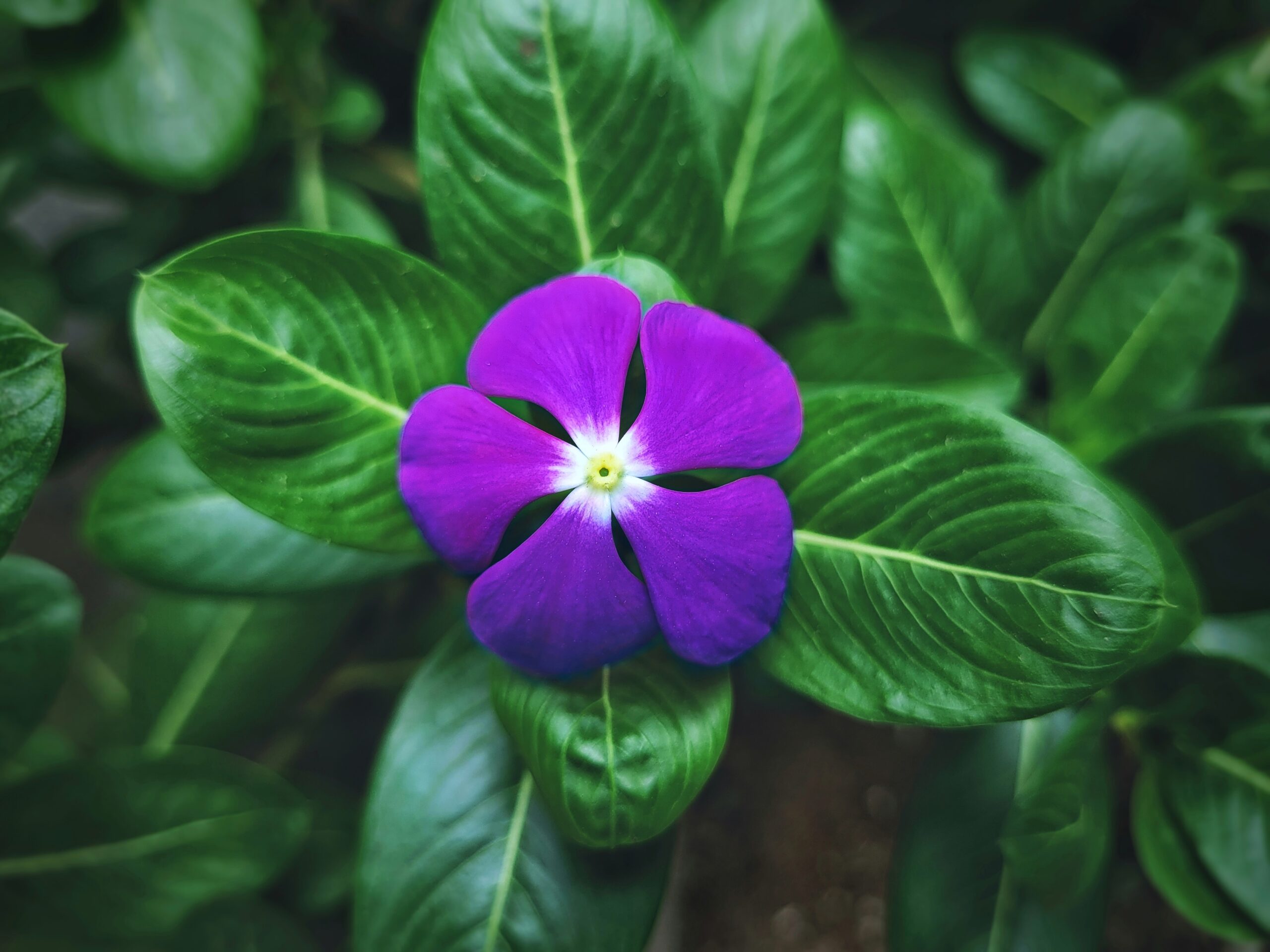
When to Plant Periwinkle
Periwinkle is a hardy plant that can tolerate a wide range of temperatures, but to ensure optimal growth, it’s best to plant it in spring or fall. Avoid planting periwinkle during the summer months when temperatures are high, as this can cause stress and damage to the plant.
In warmer climates, it’s advisable to wait until late autumn to plant periwinkle, as this will allow the plant to establish itself before the onset of winter. Additionally, planting periwinkle in cooler weather will provide the plant with the necessary conditions to establish strong roots and produce abundant blooms in the following growing season.
To ensure the best results, it’s important to choose a location that provides partial shade, well-draining soil, and adequate moisture. Proper care and attention will ensure that your periwinkle thrives and adds a splash of color to your garden for years to come.
Periwinkle is a hardy plant that can tolerate a wide range of temperatures, but to ensure optimal growth, it’s best to plant it in spring or fall. Avoid planting periwinkle during the summer months when temperatures are high, as this can cause stress and damage to the plant.
In warmer climates, it’s advisable to wait until late autumn to plant periwinkle, as this will allow the plant to establish itself before the onset of winter. Additionally, planting periwinkle in cooler weather will provide the plant with the necessary conditions to establish strong roots and produce abundant blooms in the following growing season.
To ensure the best results, it’s important to choose a location that provides partial shade, well-draining soil, and adequate moisture. Proper care and attention will ensure that your periwinkle thrives and adds a splash of color to your garden for years to come.
Where to plant Periwinkle
Periwinkle prefers partial shade to full shade, although it can tolerate some direct sunlight. It requires a minimum of 6 hours of bright, indirect light per day to grow well. In areas with hot summers, periwinkle may benefit from some protection from the afternoon sun. In general, it’s best to plant periwinkle in a location that receives morning sun and afternoon shade. Periwinkle is a great choice for a shady garden. Its dense foliage and attractive flowers make it a popular choice for adding color and interest to shaded areas, and it can also serve as a ground cover to help suppress weeds. Additionally, periwinkle is relatively low-maintenance and can tolerate a range of soil conditions, making it a versatile and easy-to-grow plant for shady gardens.
How to Plant Periwinkle
Planting periwinkle is a straightforward process that requires a few simple steps. First, choose a location that offers cool temperatures and moist soil, as periwinkle thrives in these conditions. It is essential to plant periwinkle in an area that receives at least six hours of direct sunlight daily to encourage optimal growth.
If you reside in colder regions, provide some frost protection to your periwinkle plants during the winter months. It is recommended to mulch the soil around the plant to protect the roots and prevent damage from freezing temperatures.
Proper watering is critical to the success of periwinkle plants, especially in hot and dry environments. Water your periwinkle regularly, particularly during dry periods, to ensure that the soil stays moist but not waterlogged. Overwatering can lead to root rot and other issues that can harm the plant.
How to Grow Periwinkle Plants
Growing periwinkle plants requires careful consideration of several factors to ensure optimal growth and health. Here are some tips on how to grow periwinkle successfully:
- Choose a well-drained location: Periwinkle has a long taproot, which makes it challenging to transplant. Therefore, it is crucial to choose a suitable location for planting. Periwinkle prefers well-drained soil with rich organic matter.
- Water regularly: Water your periwinkle plants regularly, especially during dry spells. Keep the soil moist, but not waterlogged, to avoid root rot and other issues.
- Provide partial shade: Periwinkle prefers partial shade or filtered sunlight, as direct sunlight can cause leaf yellowing and other problems.
- Mulch to suppress weeds: Mulching around the base of the plant can help to suppress weeds and retain moisture in the soil.
- Fertilize every two weeks: Periwinkle benefits from regular fertilization to promote healthy growth and abundant blooms. Use a balanced fertilizer every two weeks during the growing season.
- Divide clumps every three years: Periwinkle forms clumps over time , and it is advisable to divide them every three years to prevent overcrowding and maintain optimal growth.
How To Grow Periwinkle From Seed
Here are the steps to follow to ensure successful germination and growth:
- Start indoors: Sow periwinkle seeds indoors about eight weeks before the last expected frost date in your area. Use a high-quality potting mix and sow the seeds thinly, covering them with a light layer of soil.
- Provide adequate light and moisture: Once the seeds have sprouted, place them on damp paper towels in a sunny window. Make sure to keep the paper towels moist and provide plenty of light to encourage healthy growth.
- Transplant seedlings: When the seedlings have grown their first true leaves, transplant them into individual pots filled with potting mix. Keep the soil evenly moist, and provide adequate light to encourage optimal growth.
- Move outdoors: After all danger of frost has passed, move the seedlings outdoors to their permanent location. Choose a spot with partial shade and well-drained soil.
- Provide proper care: Water your periwinkle seedlings regularly, especially during dry spells. Fertilize them every two weeks with a balanced fertilizer to promote healthy growth and abundant blooms
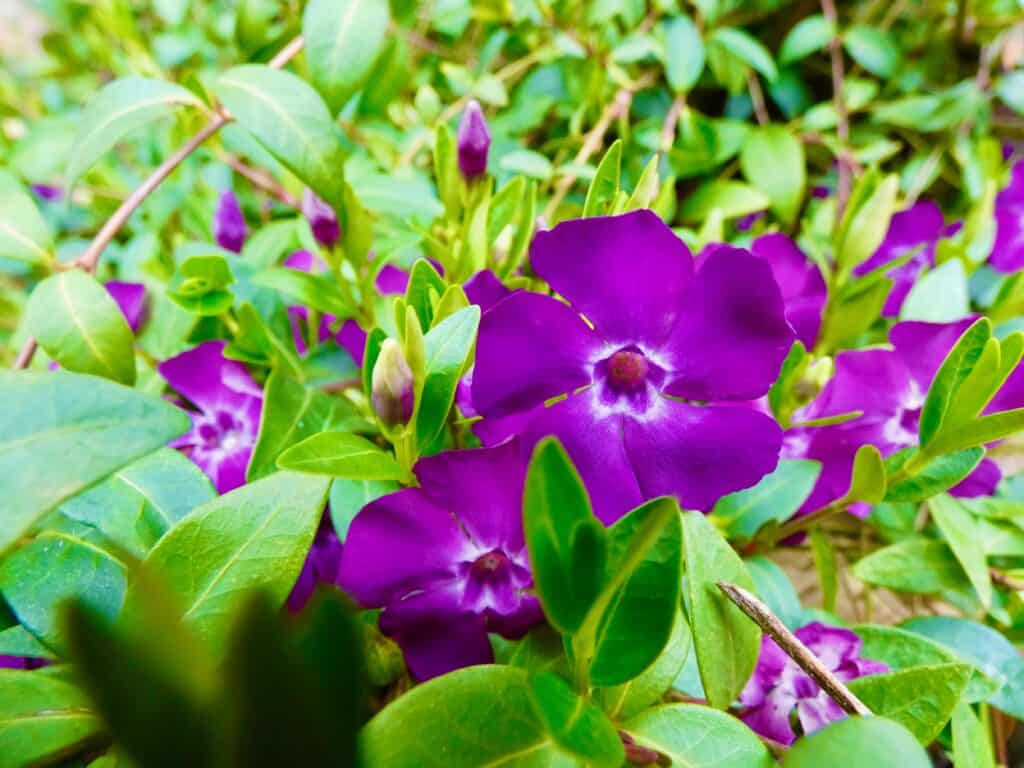
How to Grow and Care for Periwinkles
Taking care of periwinkle plants is essential for their optimal growth and health. Here are some tips for periwinkle care:
- Provide good air circulation: Periwinkle requires good air circulation to prevent fungal diseases, so make sure not to overcrowd them.
- Maintain even moisture: Water periwinkle plants only as needed to maintain an even moisture level. Avoid overwatering as it can cause root rot.
- Deadhead spent flowers: Regularly remove spent flowers to encourage new growth and prolong blooming.
- Fertilize monthly: Apply a balanced fertilizer that contains nitrogen, phosphorus, and potassium once a month during the growing season to promote healthy growth and abundant blooms.
- Mulch: Mulch around periwinkle plants to help retain soil moisture and reduce weed growth.
- Provide proper light: Periwinkle requires at least 6 hours of bright light daily. This can come from natural sunlight or artificial lighting.
- Choose well-drained soil: Plant periwinkle in rich, well-drained soil that is slightly acidic (pH 5.5-6.8). Avoid planting them in areas with standing water as they prefer well-drained soil.
- Consider growing in a greenhouse: In areas with wet winters, consider growing periwinkle in a greenhouse or under lights to provide the ideal growing conditions.
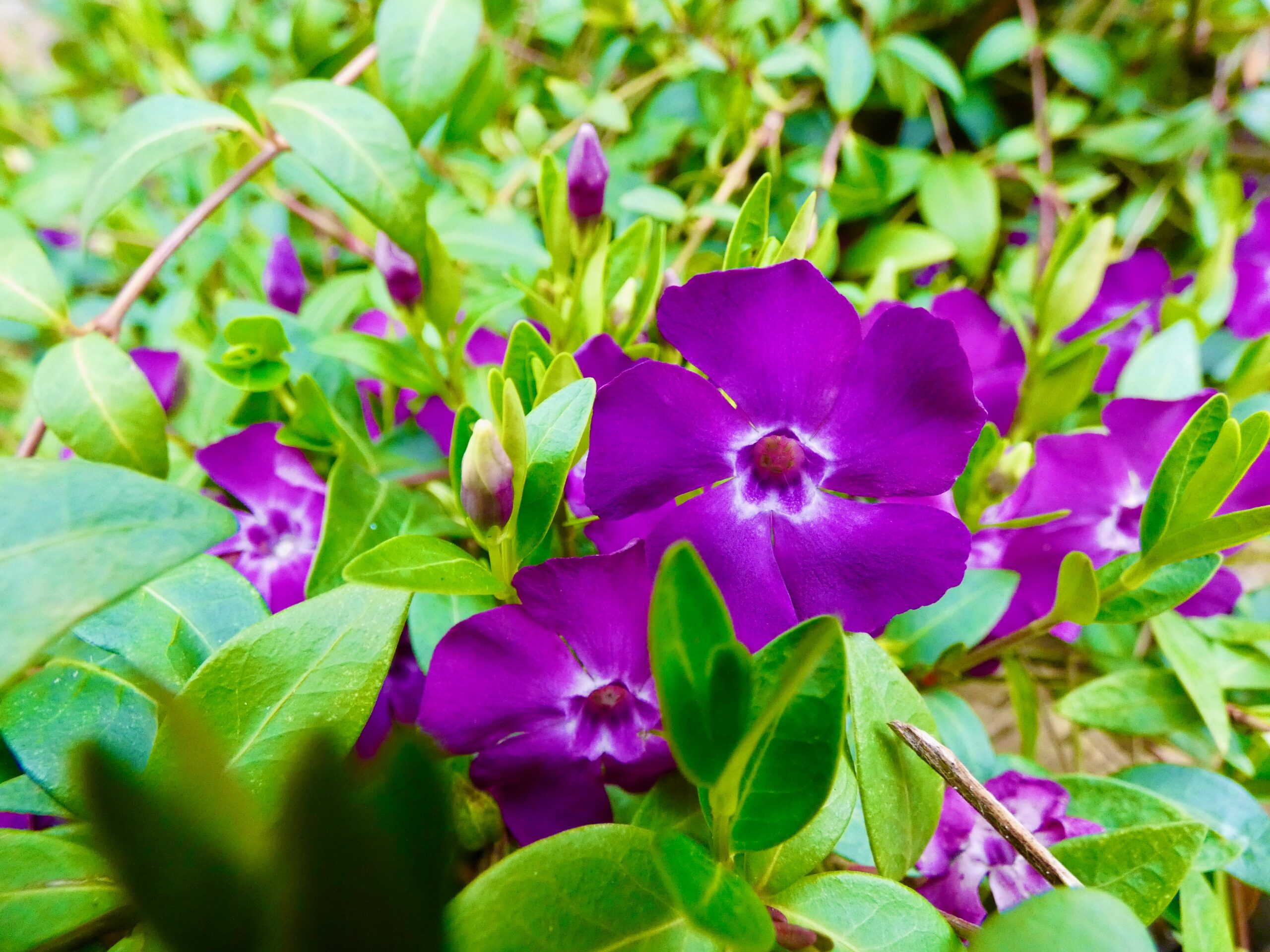
Pruning
Pruning is an important part of maintaining healthy and attractive periwinkle plants. When periwinkles are young, they tend to grow quite vigorously, and pruning can help keep them in check. Pruning is also necessary to remove weak or damaged branches, which can be detrimental to the overall health of the plant.
In addition to removing weak or damaged branches, it’s important to cut off dead foliage at ground level. This not only helps maintain the appearance of the plant but also promotes new growth. Dead foliage can attract pests and diseases, so removing it promptly is crucial to the plant’s health.
When pruning periwinkle, it’s important to use sharp and clean tools to prevent damage or disease transmission. Pruning should be done during the plant’s dormant period, which is typically in late winter or early spring. Regular pruning will help promote healthy growth and ensure that your periwinkles remain vibrant and attractive throughout the growing season.
Propagating Periwinkles
Periwinkles can also be propagated through stem cuttings. Take cuttings from healthy, mature plants in the spring or early summer when the plant is actively growing. Cut a 4- to 6-inch stem below a leaf node and remove the leaves from the bottom half of the cutting. Dip the cut end in rooting hormone and plant it in a pot filled with moist potting mix. Cover the pot with a plastic bag to create a mini greenhouse and keep the cutting in bright, indirect light. Water the cutting regularly to keep the soil moist and mist it occasionally to maintain humidity. In a few weeks, the cutting should develop roots and can be transplanted to a larger pot or into the ground.
When propagating periwinkles, it’s important to choose healthy and disease-free plants. Use clean gardening tools and sterile potting mix to prevent the spread of diseases. It’s also recommended to propagate periwinkles during cooler months when the plant is less stressed and has a better chance of successfully establishing new roots. With proper care and attention, periwinkles can be easily propagated and provide a beautiful addition to your garden.
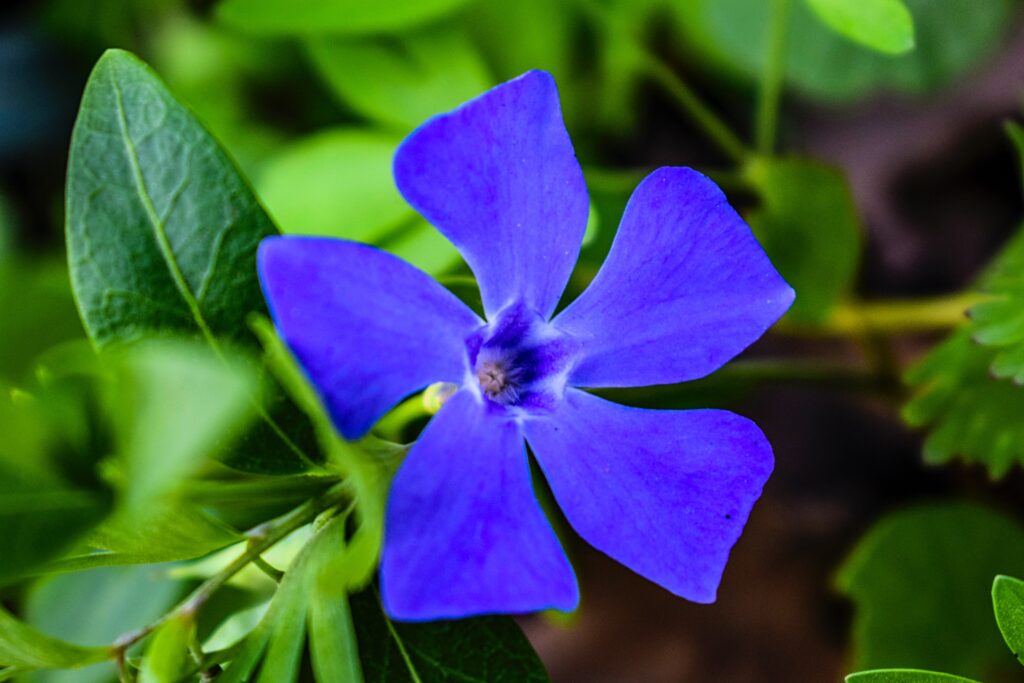
How to repot a periwinkle flower
Repotting a periwinkle flower is an important step in maintaining its health and growth. Here are some steps to follow for a successful repotting:
- Choose the right time: The best time to repot a periwinkle is during its active growth period, which is usually in the spring or early summer. Avoid repotting during the winter months when the plant is dormant.
- Choose the right pot: Select a pot that is one size larger than the current pot. It should also have drainage holes to allow excess water to drain out.
- Prepare the pot: Fill the bottom of the pot with a layer of potting mix, about one-third of the pot’s depth.
- Remove the plant: Gently remove the periwinkle from its current pot, being careful not to damage the roots.
- Loosen the roots: Gently loosen the roots with your fingers, removing any old soil or dead roots.
- Place the plant in the new pot: Place the periwinkle in the center of the pot and fill the remaining two-thirds of the pot with potting mix. Firmly press the soil into the sides of the pot to ensure the plant is stable.
- Water the plant: Water the plant thoroughly to help settle the soil and promote root growth.
- Place the plant in its new home: Place the newly repotted periwinkle in a spot with bright, indirect sunlight and maintain regular watering and care.
By following these steps, your periwinkle should thrive in its new pot and continue to bring beauty to your home or garden.
Pests and Diseases
Periwinkles are vulnerable to a range of pests and diseases that can affect their growth and health. To maintain the health of your periwinkle plants, it’s important to keep an eye out for signs of damage and take preventive measures as needed.
One common pest that attacks periwinkles is aphids. These small insects feed on the plant’s sap and can cause stunted growth and distorted leaves. Mites can also be a problem, particularly in dry weather. To control these pests, you can use insecticidal soap or horticultural oil, which are both effective and safe options.
Periwinkles can also be affected by a range of diseases, including powdery mildew, leaf spot, black rot, rust, and wilt. These diseases are typically caused by fungal pathogens and can cause discoloration, yellowing, and wilting of the leaves. To prevent the spread of these diseases, it’s important to remove any affected leaves and improve air circulation around the plant. Fungicides containing copper or sulfur can be used to control these diseases, but it’s important to follow the instructions carefully and use them only as needed.
In addition to pests and diseases, periwinkles can also be affected by environmental stressors such as drought, excessive heat, and cold temperatures. To minimize the risk of damage, it’s important to provide the plant with adequate water and nutrients, and to protect it from extreme weather conditions.
Regular monitoring and care can help keep your periwinkles healthy and thriving. With proper attention and treatment, you can minimize the risk of pest and disease problems and enjoy the beauty of these vibrant plants in your garden.
What we love from Amazon this week
Buy these wonderful flowers directly from Amazon:


